ATV Riders Forum > ATV Riders Mechanical Section > ATV Steering & Suspension > plastic welding???
PDA
View Full Version : plastic welding???
spyder
03-07-2004, 01:39 PM
After a recent run in with one of darn trees at the last race i realized i broke the plastic mounts on my front fenders. my boss told me to have welded with plastic does any body have a clue how to do that or is he pulling my leg. Thanks:huh
jonc623
03-07-2004, 02:42 PM
he is not pulling your leg try a auto body shop some of them use a plastic welding machine i just use a drill and zip ties to fix plastic it may work for you
Out_Sider
03-07-2004, 02:44 PM
u can buy stuff like JB weld..its suppose to weld plastic
T.Hopp
03-07-2004, 07:03 PM
Plastic welding exists but its costly. My #1 hobby is white water kayaking. I see alot of cracked plastic. One of my boats suffered a 4" long crack on the bottom from a rock much bigger than I. I checked a couple places to have it welded and the cheapest place wanted $75 minimum to weld it. Also, Some plastics can't be welded because it is a mixture of different recycled plastics. It is due to the impurities in the remanufacturing process. Just passing on some info.
beak7707
03-07-2004, 07:09 PM
My friend just bought a plastic welder for 30 bucks. I dont remember the website where he got it at, but I'll ask him and get it for you. I thought it was going to be a joke but it works good. It looks like a sodering iron, and you just burn a v-shape along the crack, then fill it with the clear plastic rod. After we welded the plastic I was bending and pushing on it pretty hard and it didn't break. For 30 bucks you cant beat this thing, I'll get you some pics and the website.
Texan32
03-07-2004, 07:12 PM
perhaps he was refering to "fusing" the plastic.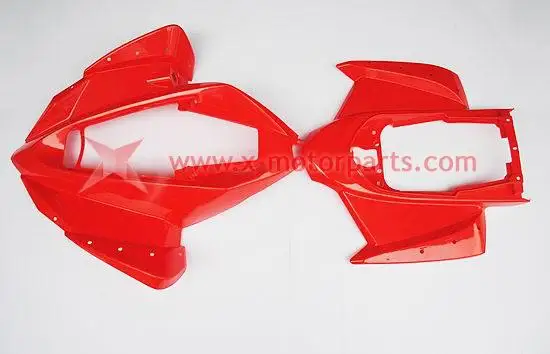 If one was so inclined, you could try to heat the plastic up enough to just start melting it. Then push the two sides together. It would fuse (weld) the plastic back into 1 piece.
If one was so inclined, you could try to heat the plastic up enough to just start melting it. Then push the two sides together. It would fuse (weld) the plastic back into 1 piece.
Personally, when i cracked my front fender, i drilled a handfull of tiny holes on both sides of the crack. Then, i used picture frame wire and "sewed it up". So, it looks like my finders have been stiched up by an ATV doctor:blah:
4wheelboy
03-07-2004, 08:27 PM
i just use a sodering iron and run it along the plastics till they get soft an put them togther :(
James Parent
03-07-2004, 08:50 PM
JB weld is 4 bucks, i cracked my seat nearly in half..
From the right side front to the left side almost to where the seat lock is (400ex) about a 2 foot crack.
i got some JB weld, cleaned the area really well, sanded it off (make it rough so it holds better) and applied the JB weld. I was supprised because it smoothed out by itself, and was hard in about 15 minutes ( theres two types.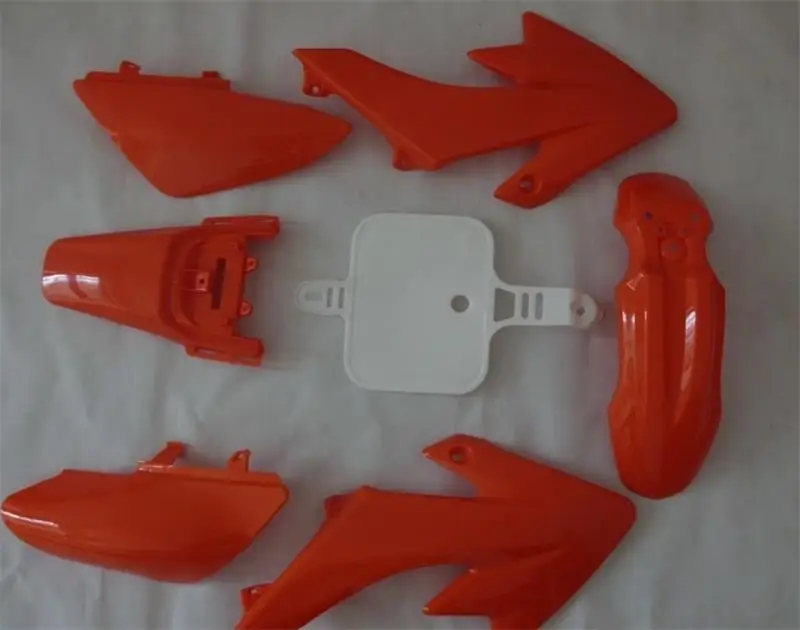 . 4 day and a 4 hour.. I recommend the 4 hour) its worth it...
. 4 day and a 4 hour.. I recommend the 4 hour) its worth it...
after that i applied some Plastic renew.. you can't even tell, its perfectly new
James Parent
RideRedEX
03-08-2004, 06:38 AM
the website that beak7707 was talking about is www.urethanesupply.com just do a search for plastic welder they sale a special kit called atv fender welder. it works great
lil400exman
03-08-2004, 01:02 PM
is the 4 day a stronger bond james?
beak7707
03-08-2004, 09:07 PM
I've used both, and I think the fast drying holds up just as well.
brandonpeake
03-09-2004, 08:45 AM
yeah i used to put in natural gas lines and i fused the plastic pipe together with what looked like a spatula and it got 600 degrees F on each side and made lips on the pipe and u stick it together with another machine, so i can be done and work well
i think
harbourfreight.com sells them for cheap
WKY400EX
03-09-2004, 10:43 AM
Like brandonpeake said, check out Harbor Freight. Here's a link to the plastic welder. (http://www.harborfreight.com/cpi/ctaf/Displayitem.taf?itemnumber=41592)
Here's a link to the plastic welder. (http://www.harborfreight.com/cpi/ctaf/Displayitem.taf?itemnumber=41592)
James Parent
03-09-2004, 07:27 PM
i just recommended JB weld because its only 3.99$
I think the slow and quick dry are the same strenth..
the quick is better though.. especially if you need to do something upside down or don't feel like holding the two peices together for a long time.. just let the stuff harden for about 2 minutes and then its really sticky... on the JB Weld tubes it says you don't need any clamps or anything for the 4 hour.
james
You can pick this up at Pepboys or that new auto store Auto zone?
Black400
03-09-2004, 10:30 PM
eastwood.com has plastic welders.
the_hulkamaniac
03-10-2004, 09:21 PM
Yeah go with the plastic welder. I've done my 250r a few times, and some friend's quads. Once when the fender was 80% cracked off.
Fuse welding is ok but you will still need some material to go back in the crack. You do have to "V" the crack either with the element, utility knife, or a dremmel. 1/16 to 1/8 is all you will need. Most of the polymers they will give you "WILL NOT" stick! Either shave off a 1/4" from the outer edge of a fender, or find a friend with broken fenders and cut strips off it.
Then work in sections, aprox 3-4" long, also stagger the sections, on big cracks. This is to keep the plastic warm, and ready to accept the weld. First lightly fuse weld it. Then go over it again this time melting some of the cut plastic directly into the weld. Work slowly so it can melt completly through. Go to long and it will drip on the other side. You can make a second pass on the opposite side of the first weld to ensure it's good. Oh yeah 1/2" wide weld is good enough.
Either side will do. If you can't stand the look of it get a plastic renew kit sand and buff the weld. She'll be good as new.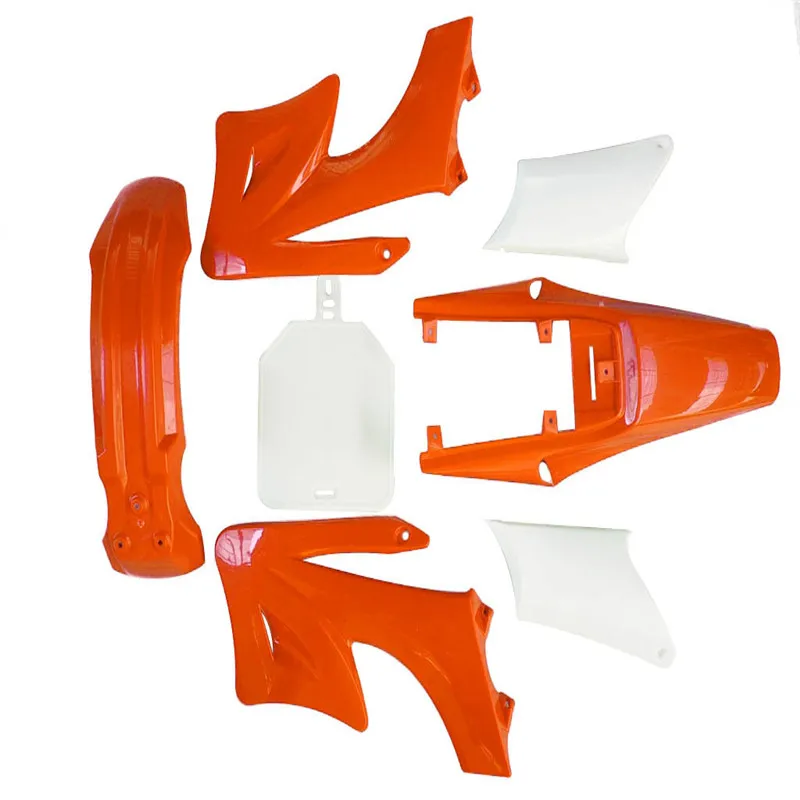
Again my 250r has held up well for over a year now. I used red plastic to weld my factory white. Looks kinda cool.
Good luck
p.s. Do it some where ventlated/outdoors. The fumes can make you sick.
Powered by vBulletin® Version 4.2.1 Copyright © 2022 vBulletin Solutions, Inc. All rights reserved.
One of the most annoying things about owning an ATV or Dirt Bike is dealing with fading or cracked plastics. No matter how great it runs, if the plastics look bad it will be the only thing you notice. In this article we cover a few easy ways to refinish your plastics without breaking the bank.
Want to jump to the repair techniques? Choose your problem below:
It’s pretty obvious what causes a crack, but what causes your ATV and Dirt Bike plastic to fade is a bit more difficult to explain.
Plastic is made primarily from refined crude oil. When it sits in the sun for extended periods, the surface level oils can evaporate and cause the plastic to dry out. Dried plastic loses its sheen and fades. Extremely dried plastics can even crack, making it very difficult to fix.
Plastic fade can appear differently depending on the color. Darker colors will develop a white layer on top of the plastic. It can be scraped off with a razor blade but leaves behind a dull color underneath. Lighter colors can yellow from sun exposure as the plastic dries out.
To refinish plastic fade, you have the unique challenge of adding back oils into the surface of your ATV or Dirt Bike. As difficult as it sounds, it actually is much easier using any of the four techniques we discuss below.
There are a litany of products online that claim to refinish plastics, but what ones actually work? Here are the three we’ve tried and their results.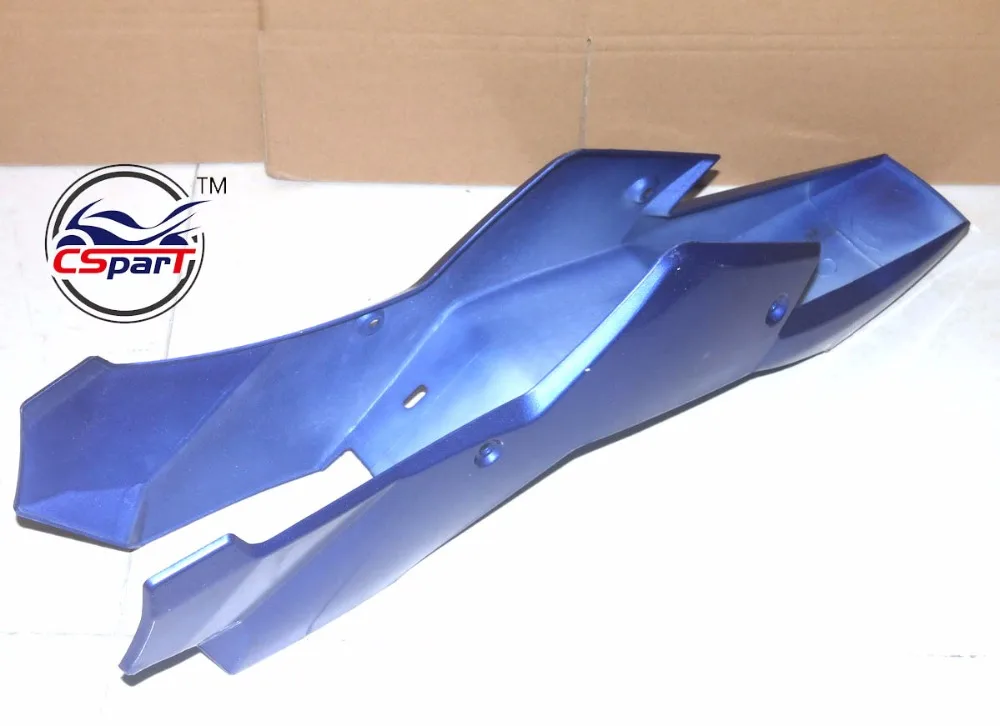
CarGuys Plastic Restorer
This was the third plastic restorer we tried to bring back the original green color on our Yamaha Bruin 350. The first three did the job, but the CarGuys Plastic Restorer did it the best, and with the longest shine. It is easy to apply with the foam pad applicator included with the bottle. And if you don’t like how it looks, CarGuys offers a zero risk purchase. You can return the bottle for a refund, no questions asked. Something you don’t see that often these days.
TriNova Plastic Restorer
This was the first plastic restorer we tried, and really liked the shine it produced. It took a bit longer to dry but left a long term shine on the plastics. You need to keep it clear while drying because it will trap dirt and bugs in the finish. I would also suggest letting it sit in the sun for 12+ hours after application and wiping off the excess multiple times to reduce any streaking when it gets wet.
The easiest of the refinishing techniques uses focused heat to bring the oils inside the plastic to the surface.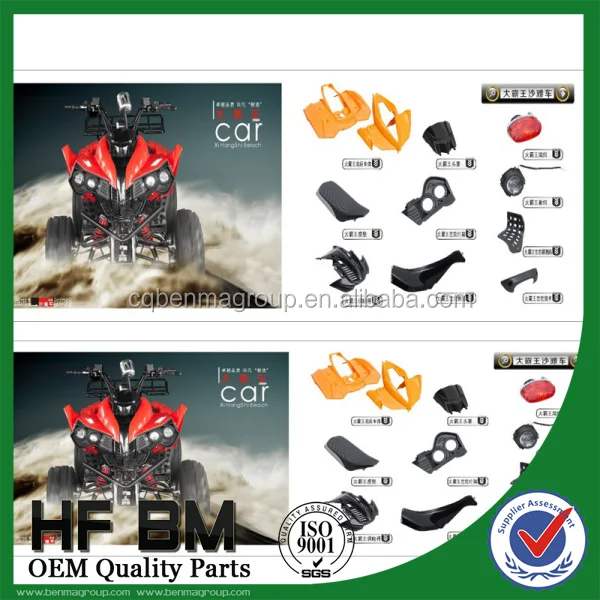 It is most commonly performed with a heat gun to ensure there is no direct contact between flame and the plastic. It also works best when applied in smaller areas, as it can be tough to get a uniform sheen with this method.
It is most commonly performed with a heat gun to ensure there is no direct contact between flame and the plastic. It also works best when applied in smaller areas, as it can be tough to get a uniform sheen with this method.
1. Test this method on the under side of a fender or somewhere with low visibility. It takes technique to know when to stop applying heat.
2. If you heat gun has multiple settings, start with the lowest heat first. Apply heat at a longer distance of 1 foot to gently warm the area.
3. Slowly move in toward the plastics with the heat gun, focusing on an area about the size of the heat gun. Let the plastic heat until you see it start to become shiny and smooth (almost looks like the plastic is melting.
4. Quickly remove heat and allow that area to cool.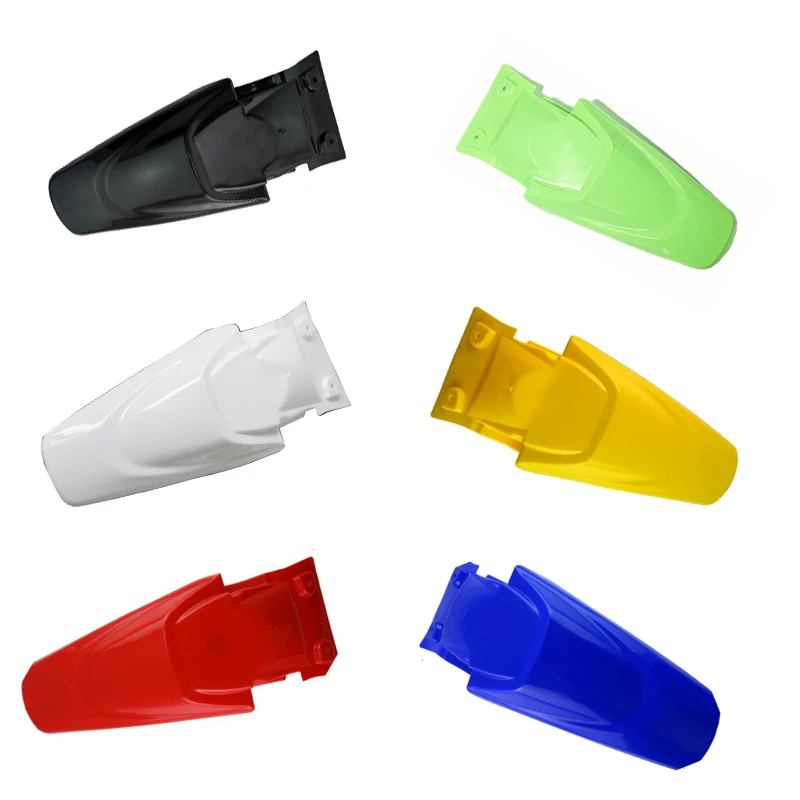 Check back to ensure the shine remains in that spot. If it becomes dull, it may 1 or 2 more applications to become more permanent.
Check back to ensure the shine remains in that spot. If it becomes dull, it may 1 or 2 more applications to become more permanent.
5. Don’t try to over heat the plastics. It won’t expedite the process. You will likely melt the plastic and no matter how much heat you apply, you can’t fix that.
This is a method that has been floating around the forums forever and we can attest that it does work. Using a simple mixture of these two items, you can renew the shine of your plastics.
1. Pre-mix in a container or spray bottle 3 parts boiled linseed oil to 2 parts paint thinner.
2. Pour some of the mixture onto your plastics or on a rag, and wipe along the surface. It will be a bit runny so make sure you keep the rag moving. The secret here is to apply a thin layer to the entire surface area.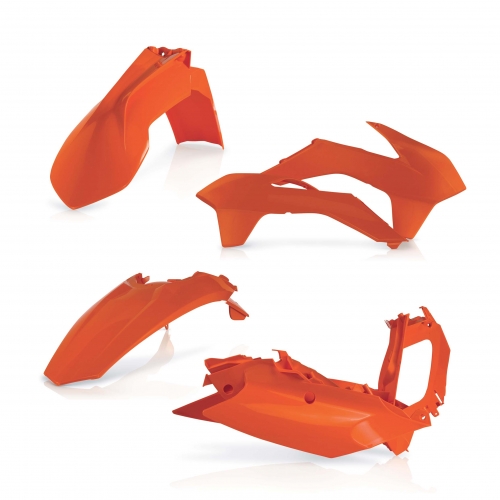
3. Let the mixture sit for about 20-30 minutes in the sun. The heat will open up the pores of the plastic, letting more of the mixture set in.
4. Wipe the plastics with a clean rag, removing the excess mixture. Let it sit in the sun for another 30 minutes to dry to the touch.
In our experience it is not permanent, but when applied a few times each year you can really make your plastics look new. The only downside to this method is i can be tacky after application, so dirt or grim can stick if you don’t wash down the vehicle first.
The most permanent but also the most time intensive option for refinishing your plastics is to sand and buff them. Sanding the plastics removes the dry faded area, exposing the underlying oils. Buffing then ensures a smooth finish, like it came from the factory floor.
1.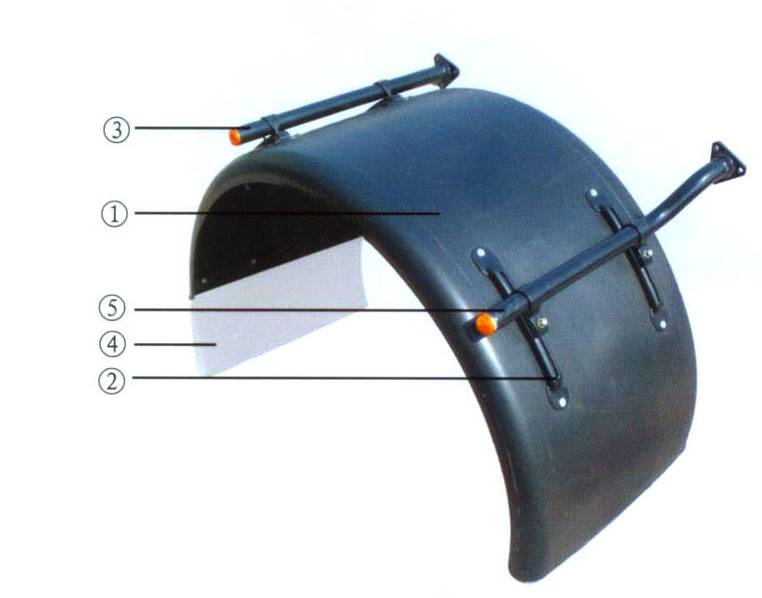 Depending on the how bad the plastics are faded will determine which starting sand paper you want to use. Typically you will want to start with a 400 grit however if you are having trouble getting through the haze you can move down to a 220 grit. Anything lower and you will remove too much plastic, potentially sanding through the part all together.
Depending on the how bad the plastics are faded will determine which starting sand paper you want to use. Typically you will want to start with a 400 grit however if you are having trouble getting through the haze you can move down to a 220 grit. Anything lower and you will remove too much plastic, potentially sanding through the part all together.
2. All sanding should be done with wet sand paper, as well as continuous water on the plastics. This will ensure that the sand paper doesn’t gum up, and will create a smoother finish. I keep a bucket of water on hand and dip the sand paper in every 20 seconds or so. In this phase you want to remove the majority of the hazing.
3. After the area has been thoroughly sanded. Switch to 800 grit sand paper and repeat the process. This will remove the remaining haze.
4. Next finish with a 1200 grit sand paper to smooth out any minor scratches in the plastic.
5. Lastly you want to buff the area with a buffing compound to remove all scratches and create a mirror like shine in the plastics.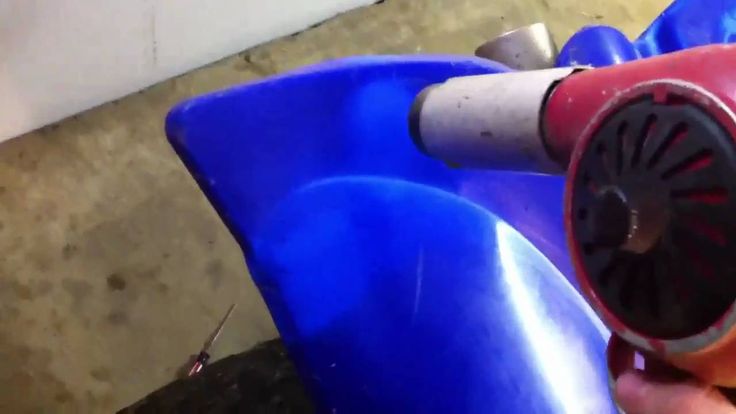
You should also consider how to remove any existing stickers on the vehicle. If the stickers have any clear sections, the faded plastic behind will show through unless you remove the sticker and sand behind it.
In the event that you crack a plastic or worse, break it, the first thing that crosses your mind is the cost of replacing the whole panel. That can set you back $100 to $500 if you find a used set. New plastics can be twice that much.
Welding plastic isn’t a perfect fix. It will close up any gaps, add rigidity and make the parts look good from a far. But when you get close, you will see the seam.
I set these expectations because some people will get upset when the plastic repair is done, and it doesn’t look brand new. If you need a good quality fix and don’t want to spend the money on a new part, then keep reading.
Plastic welding uses direct heat to melt the two ends of plastic so they can be pressed together and dried.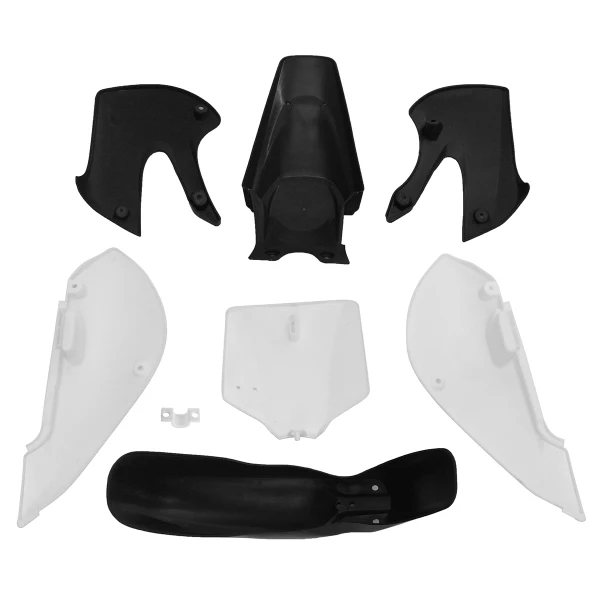 Often the weld is not strong enough by itself to hold up against moderate use, so a metal mesh is introduced to the weld to strengthen the bond.
Often the weld is not strong enough by itself to hold up against moderate use, so a metal mesh is introduced to the weld to strengthen the bond.
In this video the speaker is using a heat gun instead of a plastic welder. As you can see, it works just as effectively but may require some additional time to get the plastic to melt.
1. Clean and sand each edge of the plastic you are bonding to create a good bonding surface.
2. Prepare your tools by plugging in the welder, and having the mesh on hand for easy use.
3. Slowly heat up the inside edges of both pieces, favoring the side of the plastic which is less visible normally. You don’t want to over melt any area as it will create bumps when pressed together, or worse it will create gaps.
4. Push the two pieces of plastic back together to create a bond that we can go back and strengthen.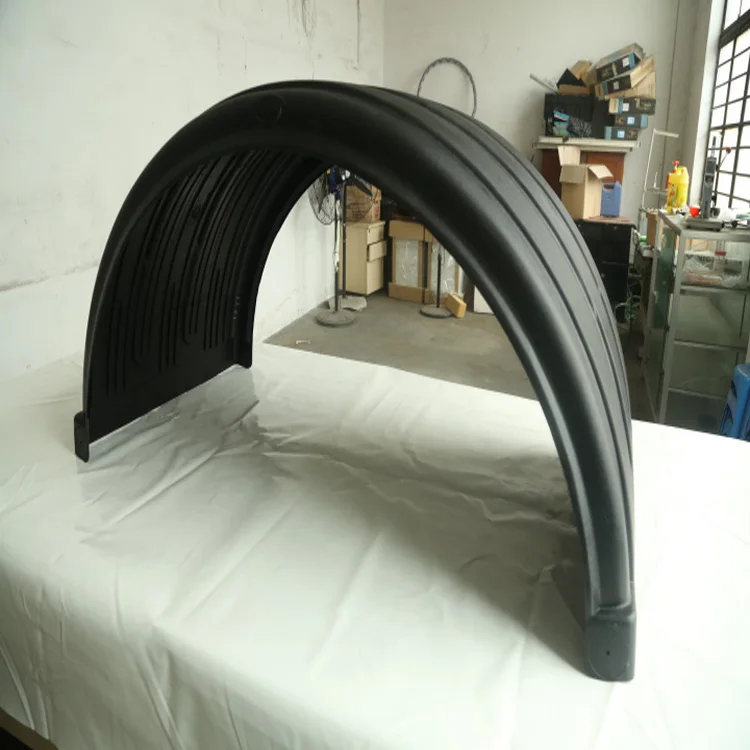 If you are not using mesh, use the welder to melt the plastic on the bottom side of the plastic, creating more surface area for the parts to bond.
If you are not using mesh, use the welder to melt the plastic on the bottom side of the plastic, creating more surface area for the parts to bond.
5. Place a small piece of mesh over the entire length of the seam, overlapping about a half inch to an inch on each side. Use the plastic welder to push down on the mesh and melt it into the plastic. You don’t need to over do it, just enough that it holds firmly.
6. Complete this process across the entire mesh to strengthen the weld. If you are repainting the plastic you can use some bondo or high build primer to hide the weld on either side.
Moscow:
1st Varshavsky proezd, 2s8
+7 499 500-97-34 call me back
The world of compact ATVs can be tricky to navigate. On the one hand, all Asian quadrics (and there are practically no others in the class of 200-250 cubes) look the same, on the other hand, looking closely, it turns out that the differences are very significant. One way or another, the main buyers of such ATVs are summer residents, parents and pensioners. Many will say that for this money you can buy a Niva or UAZ, covering all household needs. This is partly true, except that any car for the money will require constant investment and hands-on, and the ATV will be new and with a guarantee.
The same applies to cross-country ability - even the smallest rear-wheel drive vehicle will crawl through where an all-wheel drive car will land without special training. Of course, if you have certain skills. In other words, the advantages of a car over an ATV are not so obvious, and objectively they can only include comfort due to the presence of a roof and a stove, as well as carrying capacity - you cannot attach a 700-kilogram trailer to a small ATV. Otherwise, the benefits are either on the side of the ATV, or depend on specific situations.
Today we will tell you about not the most common device Yacota 250, but in order to understand what its non-standard is, you need to decide on the standard criterion. Usually all ATVs of this class are built around a steel tubular frame and a small single-cylinder air-cooled engine with a CVT.
Suspension almost always looks the same - in the front a pair of transverse A-arms without a stabilizer, in the back - in fact, a motorcycle swingarm with a solid axle, in fact it is a rear axle with a permanently locked differential.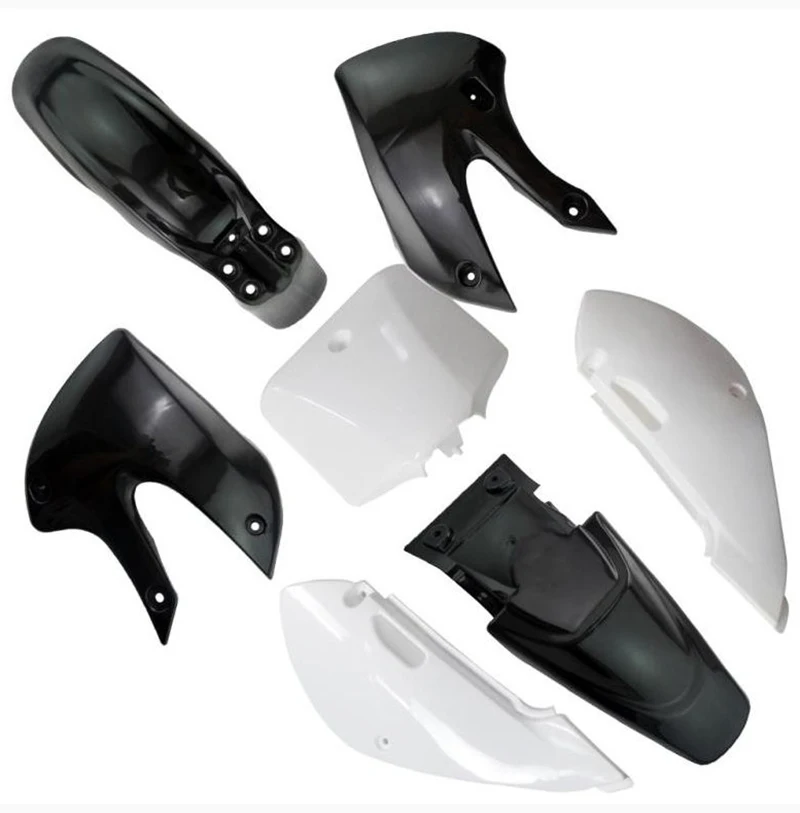 The drive is only rear and almost always chain (with rare exceptions like Loncin 250 and Puma 250, where the main drive is cardan). Plastic, lighting, the presence of additional accessories and the dimensions of the wheels can change the appearance beyond recognition, but inside all such devices you will almost always find the same thing. In other words, most often people choose from the price, but the reputation of a particular manufacturer.
The drive is only rear and almost always chain (with rare exceptions like Loncin 250 and Puma 250, where the main drive is cardan). Plastic, lighting, the presence of additional accessories and the dimensions of the wheels can change the appearance beyond recognition, but inside all such devices you will almost always find the same thing. In other words, most often people choose from the price, but the reputation of a particular manufacturer.
Yacota 250 ATV unusual. Outside, everything is like everyone else, except that the dimensions are too big and the size of the device is more like a 400-cc device. On the one hand, this is a plus - two adults feel good on it at once, and you can tie more cargo to the luggage platforms than usual. On the other hand, a large ATV takes up more space, and it is more difficult to transport it, although it still fits into the body of an average pickup truck, albeit with an open side. Moreover, due to its small mass, it is quite capable of being thrown into the back of two adult men without any ladders, boards and similar devices.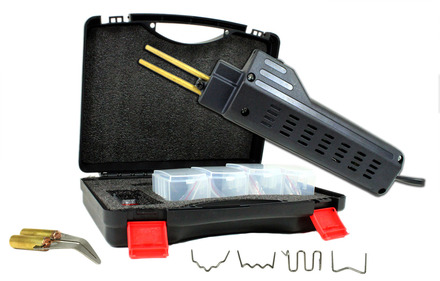
More comfortable with such dimensions and on the move, wide fenders perfectly protect against dirt flying from the wheels. In cars, the width of the arches is rather a tribute to aesthetics, for many ATVs, atrophied wings become a real problem, getting wet in the first puddle is a dubious pleasure.
But the front suspension raises questions. As we have already found out, the vast majority of ATVs are equipped with dual A-arms, a model of simplicity and reliability. So, on the Yacota 250, instead of them, there is only one lever per side, working in tandem with the MacPherson strut. A familiar solution for a passenger car or crossover, which is used by only a few manufacturers in the world of ATVs, in addition to Yacota. A couple of Chinese and one large company - the American concern Polaris. True, such a suspension can only be found on utilitarian models, while even sports ones from this American brand are on the usual double levers.
Probably, it is easier and cheaper to maintain and repair such a design, but at high speed and a bad road, the device does not have enough stability, you constantly have to catch it.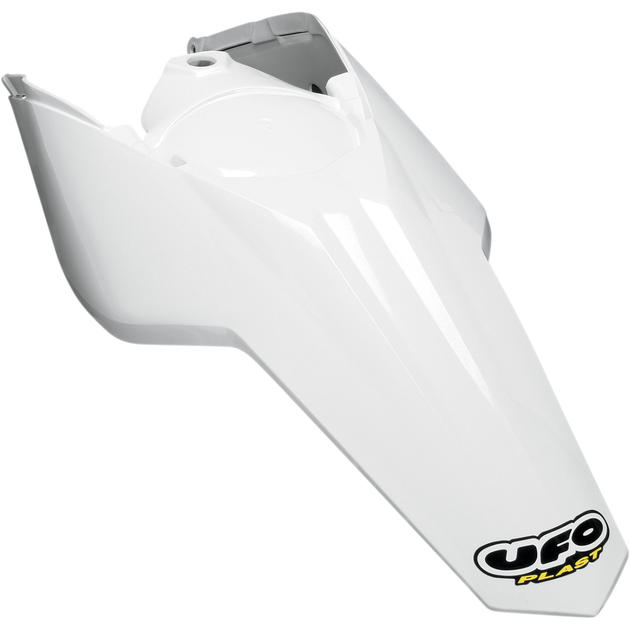 The spring preload is adjustable here, so in theory the suspension can be made a little stiffer, and the pressure in the wheels can be increased, sacrificing comfort to make the device more stable, but this question does not arise with traditional designs. In theory, the move should also be less, but in practice there is no shortage, so there are no difficulties with cross-country ability and landings after small jumps.
The spring preload is adjustable here, so in theory the suspension can be made a little stiffer, and the pressure in the wheels can be increased, sacrificing comfort to make the device more stable, but this question does not arise with traditional designs. In theory, the move should also be less, but in practice there is no shortage, so there are no difficulties with cross-country ability and landings after small jumps.
But the semi-automatic transmission raises questions for many. The variator allows you not to think - he moved the poker of the box to the "Drive" position, pressed the gas trigger and drove off, let go - stopped. You can't think of a better one. Meanwhile, the mechanics of the Yacota 250 require not only switching to "Drive", but also the constant operation of the gearshift pedal. She doesn’t have a clutch lever either, so it’s enough to just let go of the gas to switch, but the constant work of the left foot controlling the box pedal is tiring.
A lot of people don't like it, almost everyone. However, this scheme has several advantages. First gear is incredibly short. In fact, you can get under way with the second even loaded, so where the belt starts to slip from overload on the variator, you just need to stick the first one on the mechanics. Any climbs, a heavy trailer, anything, a scrawny motor with such a lowering pulls anything. In addition, and this is well known to all ATVs, even with a snorkel, you can pour water into the CVT through its ventilation.
However, this scheme has several advantages. First gear is incredibly short. In fact, you can get under way with the second even loaded, so where the belt starts to slip from overload on the variator, you just need to stick the first one on the mechanics. Any climbs, a heavy trailer, anything, a scrawny motor with such a lowering pulls anything. In addition, and this is well known to all ATVs, even with a snorkel, you can pour water into the CVT through its ventilation.
Even if the engine is still running under water, the ATV first stops moving, and then the belt slips for a long time. You have to either remove the cover and drain the water, or hope, at the risk of overheating the belt due to slippage, that the hot mechanism will dry itself, since the air in it constantly circulates. The mechanics have no such problems and close, she is not afraid of water from the word at all. Maximum - some amount of liquid will get into the oil, which, upon returning home, will have to be changed, but for this you need to properly bathe the device.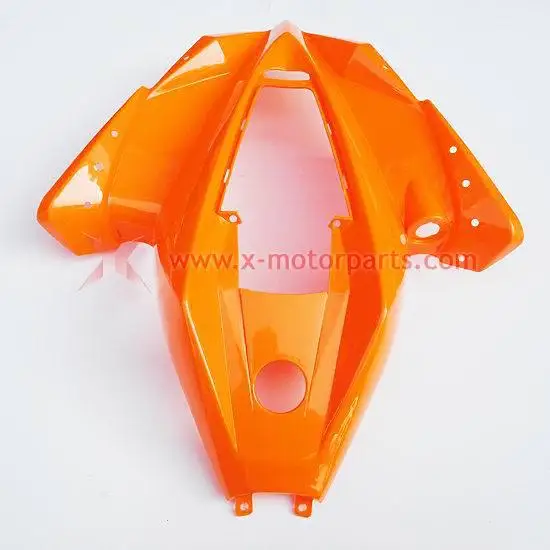
In addition to the short “first”, there is also a long “fourth” in mechanics, and if the diameter of the variator pulleys does not allow the motor to realize its full potential, then the Yacota 250 is head and shoulders faster than its variator counterparts in straight lines. And that's impressive too. One problem - a manual box is more complicated and, despite a longer resource, it will be more expensive to repair it, the variator is simpler - two pulleys, a centrifugal clutch and a belt, waved all the consumables at once - consider that you got a new mechanism.
Another feature is the final drive. While most Asian ATVs have a drive chain, the Yacota 250 has a cardan shaft and gearbox. The differential is locked here too, but the complex mechanism is again intimidating. On the one hand, he lives for a long time, all maintenance comes down to rare oil changes, because the crosses are covered with anthers, while the chain constantly requires tension, cleaning, lubrication and systematic replacement of drive stars. In other words, it is difficult to say which of the solutions is clearly better. One way or another, the cardan and the bridge work perfectly, no complaints have arisen against them.
In other words, it is difficult to say which of the solutions is clearly better. One way or another, the cardan and the bridge work perfectly, no complaints have arisen against them.
Disc brakes in a circle, in front there is a mechanism on each wheel, in the back - one, located at the axle gearbox, with a continuous axle, two are not needed. The efficiency is excellent, there is a pedal and two levers on the steering wheel, you can choose any convenient one. On the pedals, of course, the effort is less, on the levers, on the contrary, you need to press harder. The drive, like in adults, is hydraulic, although there are no amplifiers here at all, but the handbrake is with a cable, but it is better to remove it immediately. Quad with mechanics can always be parked in gear, and the risk of forgetting about the handbrake and leaving to burn the pads is great - there are no light bulbs reminding of its work. In addition, it constantly needs to be tightened.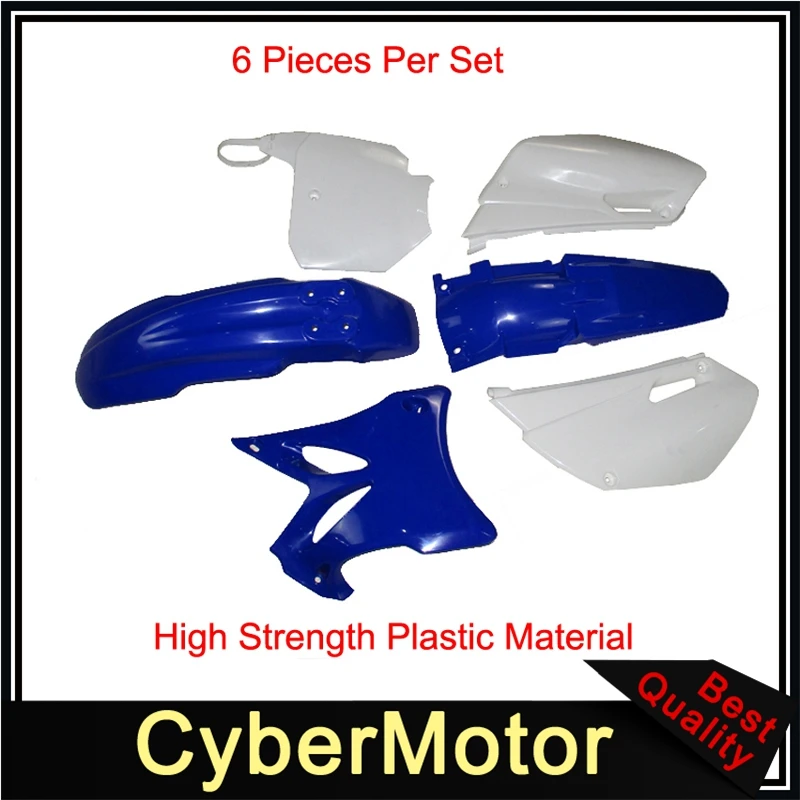 In a word - an extra detail.
In a word - an extra detail.
The air intake is well positioned, sucking air for the motor from a waterproof housing under the saddle. We drowned this quad up to the seat, but the filter remained completely dry. At the same time, the motor stalled and did not want to start for a long time. The answer was found by chance - it turned out that the outlet located a little lower, on the gas discharge, was filled with water, which the small motor simply could not spit out. I had to put the quad bike vertically and drain the water from the muffler, after which the device instantly started up and drove off as if nothing had happened. In general, the design of the outlet and its location are far from perfect, while the air filter, on the contrary, turned out to be ready for such tests.
As for the motor, it already pulls to the title of classic. Four strokes, one cylinder, two valves, OHC (timing chain and one camshaft), carburetor and air cooling. There is simply nothing to break here, and servicing, for example, changing oil, a candle or adjusting valve clearances, can be done by everyone in the garage, no sophisticated tools and knowledge are needed. The only question, or rather bewilderment, was caused by a pair of computer coolers. How they help the developed cooling fins, which are already blown by all the winds, is not clear, but in this way the Chinese tried to come up with insurance against overheating: the temperature went up, the coolers started working.
The only question, or rather bewilderment, was caused by a pair of computer coolers. How they help the developed cooling fins, which are already blown by all the winds, is not clear, but in this way the Chinese tried to come up with insurance against overheating: the temperature went up, the coolers started working.
Probably, if the ATV is rented, where the speeds are low and the territory is clean, this decision makes sense, but in the realities of real off-road operation, they will die rather quickly, and there is not much sense from them. This statement is confirmed by the experience of other similar motors, where no one hangs such coolers. In addition, air-cooled motors are initially made with such thermal clearances in order to minimize the risk of thermal sticking, and the mixture is usually rich there for the same purpose.
As for passability, instead of dozens of stories, it's better to try once to close all questions. I will only add that, despite the “lack of drive”, the blocked axle works wonders, and multiplying it by a modest mass and toy dimensions, you can climb anywhere.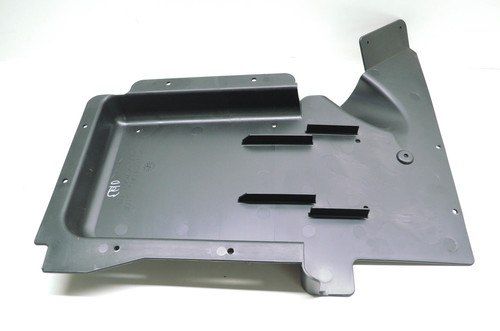 Ground clearance allows you to skip a small log between the wheels, the bottom is almost flat, and 12-inch wheels shod in high tires with an evil pattern, gnaw well even muddy mud. The real problem can only be a ford, waist-deep (for which an ATV needs to be specially prepared) and some kind of swamp where the device will fail.
Ground clearance allows you to skip a small log between the wheels, the bottom is almost flat, and 12-inch wheels shod in high tires with an evil pattern, gnaw well even muddy mud. The real problem can only be a ford, waist-deep (for which an ATV needs to be specially prepared) and some kind of swamp where the device will fail.
The rest is incredibly fun. The track, where any off-road vehicle sits on bridges, is taken effortlessly, either along the upper edges, or on the side into a detour, or on one side into the track, the second on the upper edge, there are many options. The square can always be pushed even on its own, lifted and rearranged if it is hopelessly buried, and indeed there are many options, it would be a fantasy. With a trailer, of course, off-road is much more difficult, and although the towbar is included in the standard package, it is better not to meddle with the trailer outside the dirt roads and hard surfaces.
In any case, the Yacota 250 is an interesting and unusual device and worthy of attention!
 Utility ATV Range
Utility ATV Range Every ATV fan has a special place in his heart for Yamaha's largest 4WD Grizzly ATV. However, the reason for its popularity is not at all the size. The Grizzly is equipped with a SOHC engine with a displacement of less than 700cc, which is inferior in power to almost all high-performance models. When the race for numbers began on the market, the volumes of utility ATV motors increased first from 700 cm 3 to 750 cm 3, then rose to 800 cm 3 and, finally, stopped at around 1000 cm 3. However, Yamaha stood its ground and focused on more practical features. Grizzly attracts buyers with balanced features that will continue to sell this machine for many years to come. The 2014 Grizzly 700 is no exception to the rule. Yamaha could easily just change the color of the ATV. Instead, the Japanese listened to the opinions of numerous dealers and consumers, making this excellent ATV even better.
Grizzly's 686cc liquid-cooled SOHC engine is the largest engine in Yamaha's ATV and UTV arsenal.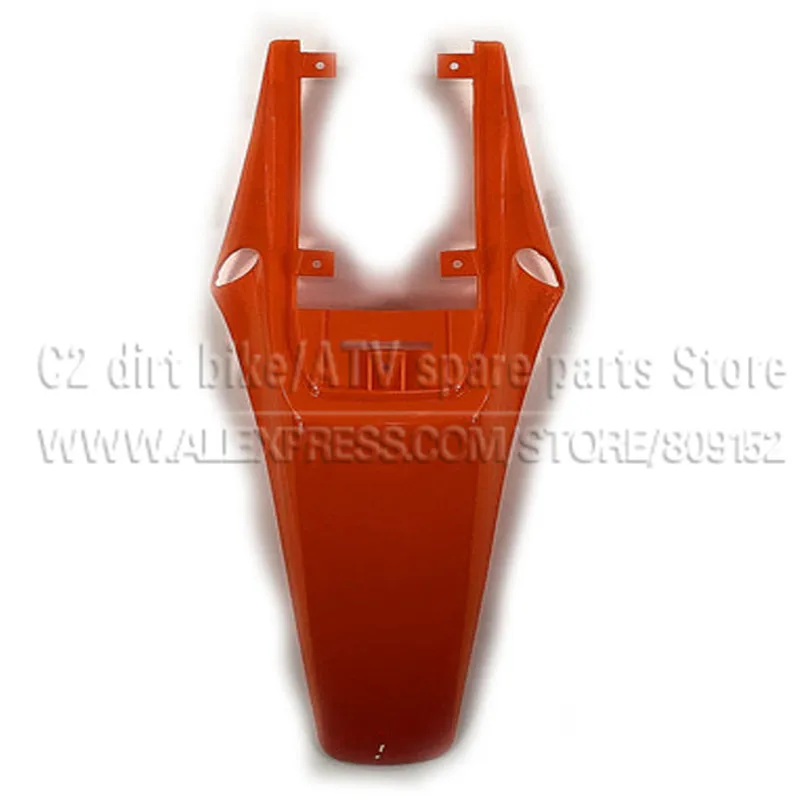 If you think bigger is better, skip this article and check out the Polaris Sportsman 850 or Can-Am 800 or other 1000cc 4x4 models in our ATV Buyer's Guide. However, if practicality is what you're after, then you'll probably like the Grizzly 700's wide powerband, introduced to 2014 models thanks to a redesigned cylinder head, a new piston shape that increased compression (from 9.1:2 to 10.0:1), improved lower rpm ranges and more responsive throttle. Even at an altitude of more than 1.8 km above sea level, Grizzly, equipped with a unique electronic fuel injection system, works perfectly.
If you think bigger is better, skip this article and check out the Polaris Sportsman 850 or Can-Am 800 or other 1000cc 4x4 models in our ATV Buyer's Guide. However, if practicality is what you're after, then you'll probably like the Grizzly 700's wide powerband, introduced to 2014 models thanks to a redesigned cylinder head, a new piston shape that increased compression (from 9.1:2 to 10.0:1), improved lower rpm ranges and more responsive throttle. Even at an altitude of more than 1.8 km above sea level, Grizzly, equipped with a unique electronic fuel injection system, works perfectly.
Transferring increased engine power to the wheels is Yamaha's Ultramatic automatic transmission, equipped with an additional centrifugal clutch that reduces belt wear. Stop the Grizzly and the traction clutch will also stop rotating, whereas on most CVT systems it is always running and gradually wears out the belt. This transmission provides the most natural engine braking we have ever tested. You can drive your car down a steep hill and not have to worry about pressing a button or turning a lever to activate the engine brake. It works automatically when the motor speed is lower than the wheel speed. The system blocks the shaft and causes the wheels to slow down the engine. In 2WD mode, engine braking is carried out through the rear wheels, and in 4WD mode, the front wheels are also involved. The transmission has up and down ranges, reverse mode, as well as neutral and park gears.
You can drive your car down a steep hill and not have to worry about pressing a button or turning a lever to activate the engine brake. It works automatically when the motor speed is lower than the wheel speed. The system blocks the shaft and causes the wheels to slow down the engine. In 2WD mode, engine braking is carried out through the rear wheels, and in 4WD mode, the front wheels are also involved. The transmission has up and down ranges, reverse mode, as well as neutral and park gears.
The Grizzly's all-wheel drive capabilities are almost flawless. The three-position On-Command system allows you to select the mode suitable for the terrain by pressing a button on the steering wheel. Drivers are available in 2WD, 4WD with limited slip and 4WD with a full differential lock. Thanks to the electric power steering, we rarely shifted the Grizzly into 2WD. Unless you're climbing rocky terrain and muddying swampy terrain, you'll only be pressing the full diff-lock button on holidays.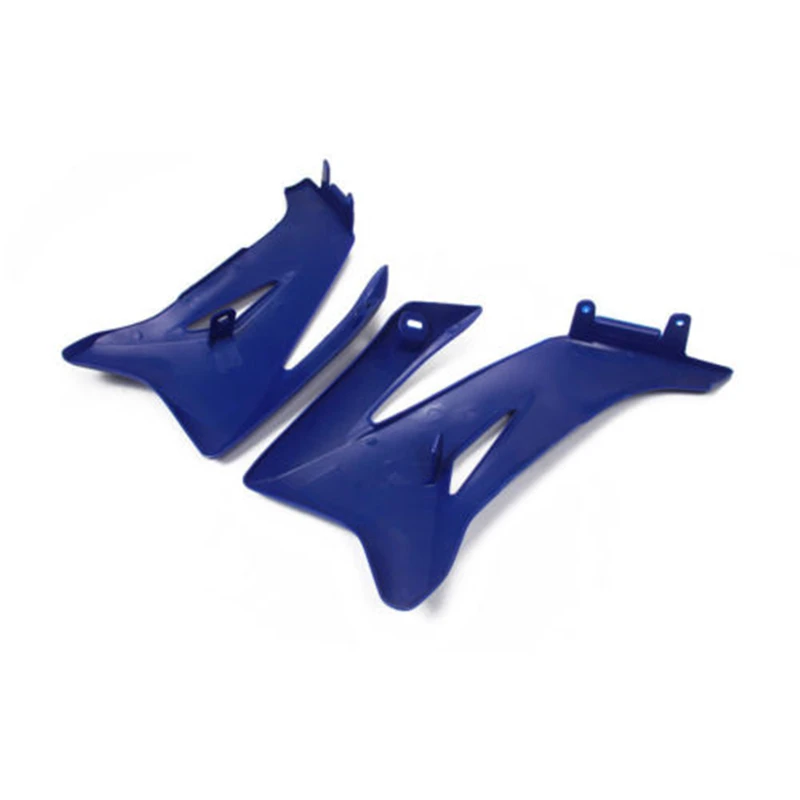 That's how good this 4WD system is. However, we still wanted to see the blocking in action and specifically traveled over the rocks. For 2014, Yamaha has increased steering support not only in 2WD and 4WD modes, but also in full differential lock! Once upon a time, to control an ATV on difficult terrain, the driver had to be in good physical shape. Now you can eat, drink and lie on the couch as much as you want!
That's how good this 4WD system is. However, we still wanted to see the blocking in action and specifically traveled over the rocks. For 2014, Yamaha has increased steering support not only in 2WD and 4WD modes, but also in full differential lock! Once upon a time, to control an ATV on difficult terrain, the driver had to be in good physical shape. Now you can eat, drink and lie on the couch as much as you want!
Yamaha Electronic Power Steering (EPS) is perhaps the most rewarding $500 you can spend on an accessory for your ATV. In fact, if we didn't have an electric booster, we might never have returned home. The car was tested on the hard and windy "Big Bear" route, littered with "invisible" rocks and tree roots that could eat you for lunch. During the last ride of the day, we ran into one of these hidden obstacles at high speed. If it wasn't for Grizzly's electric amplification, we'd probably have broken a few fingers. The amplifier gives the driver a sense of security and constant control. And, although most of the time we did not even notice EPS, at the right moments it justified itself one hundred percent.
And, although most of the time we did not even notice EPS, at the right moments it justified itself one hundred percent.
The Grizzly platform has always suited aggressive riders, but in terms of comfort, it was hard to compare to Polaris and Can-Am machines. For 2014, Yamaha gave the new Grizzly 700 a wider, more stable chassis and increased suspension travel. In addition, tires with increased lugs have been developed in cooperation with Maxxis. In addition, the new tires are so rigid that they are not at all afraid of sharp stones. All of these modifications add up to significantly improve the Grizzly's ride comfort at low speeds and make the car more agile despite its width.
Brakes work perfectly. The brake levers are located on the right and left of the steering wheel. In addition, next to the right foot of the driver is the rear brake pedal. The left handle controls the dual hydraulic disc brakes in the rear wheels, while the right handle controls the front wheels. There is no emergency brake, but the transmission does have a park mode on the left side of the shift lever that keeps the Grizzly in place.
There is no emergency brake, but the transmission does have a park mode on the left side of the shift lever that keeps the Grizzly in place.
Ergonomic Grizzly 700 features a plush seat, full-length floorboards, raised footrests and large fenders. The ATV's instrument panel has a multi-functional LCD display showing fuel injection and power steering information, as well as a fuel level gauge, speedometer, odometer, trip odometer, clock and differential lock indicator. On the left side of the display is a waterproof socket to charge your phone or GPS. And dual 35-watt halogen headlights provide plenty of light for nighttime driving. There are two storage areas on board the ATV, located under the seat and in the right front fender. In addition, 130 kilograms of cargo can be placed on the cargo racks (45 in front and 85 in the rear), and with the help of a trailer, the Grizzly can carry another 590 kilograms.
For years, we've argued that the Grizzly 700 was the best-handling ATV on the market. The 2014 model, in addition to this, has become a little more comfortable and powerful. The Grizzly 700 EPS is priced at $9499 in Hunter Green, Steel Blue and Red. For the Realtree AP HD camo you will have to shell out an additional $450, and the special black version will set you back $10999 dollars.
The 2014 model, in addition to this, has become a little more comfortable and powerful. The Grizzly 700 EPS is priced at $9499 in Hunter Green, Steel Blue and Red. For the Realtree AP HD camo you will have to shell out an additional $450, and the special black version will set you back $10999 dollars.
Engine
Drive system
Suspension
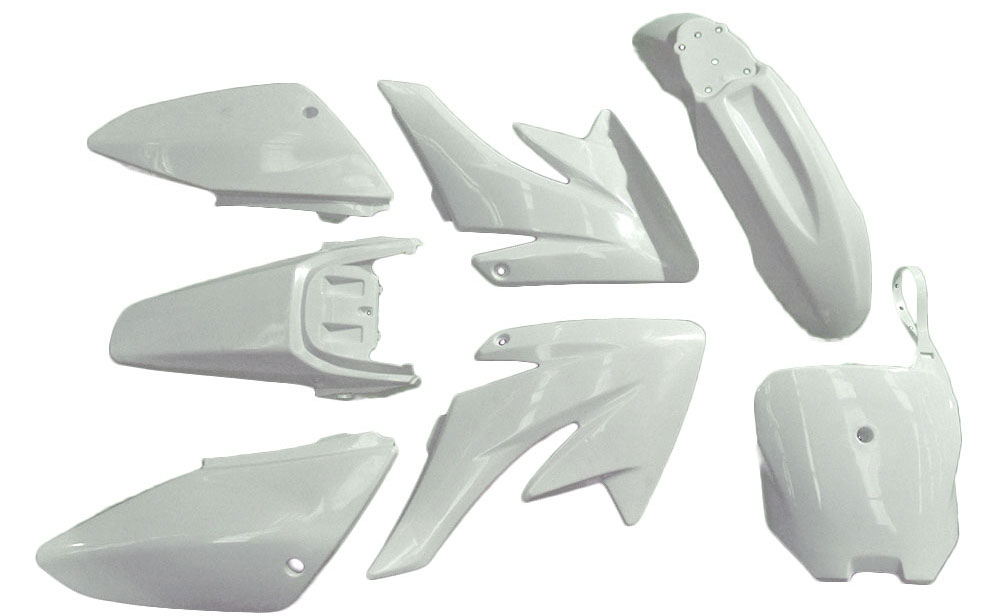
Brakes
Wheels
Dimensions
Load capacity
Electronics
Colors
Introduced in 2006, the Yamaha Grizzly 700 had a predecessor, the Grizzly 660, a fairly popular ATV in those years. However, the novelty outshone all, without exception, competitors, because it was the first in the industry to use electric power steering - EPS.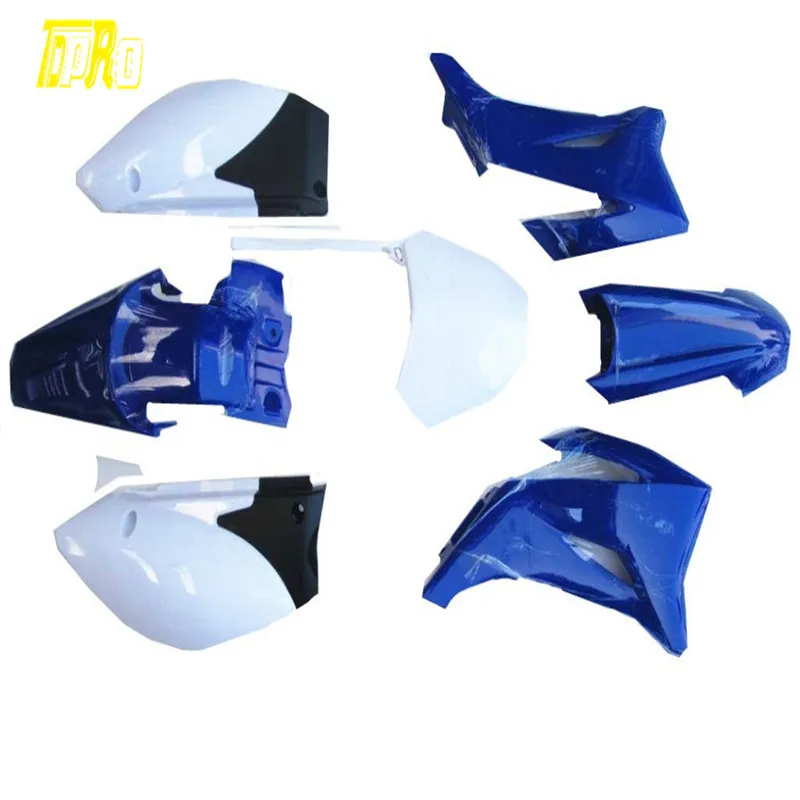 At first, macho quad movements spoke contemptuously about this innovation, saying that weaklings and ladies needed it, but after trying it, they stopped. After all, EPS (with variable force depending on speed) not only reduces the effort on the steering wheel, it also works as a damper - it protects your hands from shocks transmitted from the wheels. However, not everything went smoothly with this device. The most innocuous failure occurred during winter operation, when water frozen inside simply turned off the system. But a much worse malfunction manifested itself as follows. At some point, when taxiing, the ATV jerked slightly away from the trajectory intended by the pilot. However, ways to solve all these troubles have long been known, and fresh models do not sin like this.
At first, macho quad movements spoke contemptuously about this innovation, saying that weaklings and ladies needed it, but after trying it, they stopped. After all, EPS (with variable force depending on speed) not only reduces the effort on the steering wheel, it also works as a damper - it protects your hands from shocks transmitted from the wheels. However, not everything went smoothly with this device. The most innocuous failure occurred during winter operation, when water frozen inside simply turned off the system. But a much worse malfunction manifested itself as follows. At some point, when taxiing, the ATV jerked slightly away from the trajectory intended by the pilot. However, ways to solve all these troubles have long been known, and fresh models do not sin like this.
Injection single-cylinder five-valve engine is very successful in all respects. It is both economical and high-torque, and everything is fine with pickup. One thing is frustrating: unlike the 660 model, it does not have a backup manual starter, and if the winch “sucks out” the battery (purchased as additional equipment), then an external source of electricity will be needed. After all, it is impossible to start a symbiosis of an injection motor and a CVT gearbox from a tugboat.
After all, it is impossible to start a symbiosis of an injection motor and a CVT gearbox from a tugboat.
All known motor problems have two causes. The first is drowning. Despite the fact that the air intake system is made according to the siphon principle and the air for the engine is taken from the top point under the plastic of the front trunk, it is not at all difficult to “drown” the quadric. And here, if there is no water hammer, the water will be clean, and resuscitation work to clean the oil system will be carried out in the next few hours, then most likely everything will go without consequences. Delay in resuscitation threatens the appearance of rust on the parts inside the motor, and this is already a verdict. By the way, experience has proven that, shod with high-profile 27-inch wheels (with standard 25s), the Grizzly 700 has positive buoyancy. That is, if you do not sit on it, but swim nearby, then the water does not reach the air intake. However, the quad will try to float up with its wheels, and the slightest current will help it with this.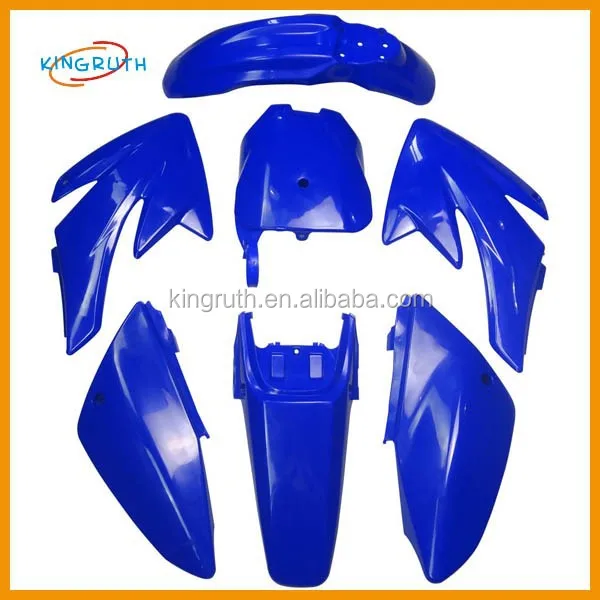
The second reason is overheating. The water-cooled radiator, located behind the front grille, is quickly covered with mud and grass. The thermal mode of operation of the motor is violated, and even a constantly running fan does not save the situation. Of course, there is an overheating light on the dashboard, but not everyone sees it, and during quad competitions they simply turn a blind eye to it. The result appears gradually. To begin with, the engine starts to eat up oil, then it smokes, and then it comes to the “capital”, and this is not a very budgetary event. Therefore, lovers of serious off-road trips take out the radiator on the front trunk. As for fuel consumption, it depends solely on the driving mode. A twenty-liter tank in a hard off-road in swamps and windbreaks, where the quadric does not drive, but crawls, constantly getting stuck, will end in 60 - 70 km. Well, with a leisurely journey, it will be enough for 140 km.
Variable speed transmission with engine braking system during non-extreme operation is almost eternal. And even such a consumable item as a variator belt for this model is not among the essentials on a long journey. High belt life is ensured by a special design with two clutches, one of which is a shoe type.
And even such a consumable item as a variator belt for this model is not among the essentials on a long journey. High belt life is ensured by a special design with two clutches, one of which is a shoe type.
CVT ventilation snorkel is located in the same place as the engine air intake. Drowning in dirty water is fraught with serious problems, but again, it is not easy to “kill” the variator, at first it will hurt with noticeable symptoms. You can tear the CV joint covers on the branches, and if you don’t change it right away, you will soon have to change the drive. However, as a result of the modernization of 2009th year, covers began to be made of especially durable material. Disc brakes are installed on each wheel. Their efficiency and clarity are at their best, only in particularly muddy conditions, expensive pads run out without even having traveled thousands of kilometers.
The all-wheel drive system here is the most common, we can say that the classic. There is a rear wheel drive mode. Since there is no cross-axle differential at the rear, the two wheels always "row" with full force. The next mode is all-wheel drive, and the third one is the same all-wheel drive, but also with a locked front cross-axle differential. Since there is no center diff here either, it turns out that the torque is distributed equally to all wheels. You should not abuse the last mode, because it increases the patency in very rare conditions, and the load on the transmission increases significantly. Gearboxes, subject to intact seals and regular inspection of the oil for emulsion, are not included in the area of increased attention.
Since there is no cross-axle differential at the rear, the two wheels always "row" with full force. The next mode is all-wheel drive, and the third one is the same all-wheel drive, but also with a locked front cross-axle differential. Since there is no center diff here either, it turns out that the torque is distributed equally to all wheels. You should not abuse the last mode, because it increases the patency in very rare conditions, and the load on the transmission increases significantly. Gearboxes, subject to intact seals and regular inspection of the oil for emulsion, are not included in the area of increased attention.
Independent front and rear suspensions are perfectly tuned for all types of intelligent driving. The levers are strong, the ball joints are well protected. Unless the hub bearings, when installing large wheels, become a detail that you have to remember from time to time. By the way, about the wheels. Without intervention in the suspension, you can even put 28-inch wheels, thereby significantly increasing the already not small ground clearance.
The entire electrical part is made taking into account moisture and dirt protection, vibrations and is laid in such a way that it is very difficult to damage it even when wading through a windbreak. It's nice that there is a sealed outlet. In electrics, there is a system for reading error codes from electronic components with output to the dashboard information display and programming from it.
The plastic is frost resistant and very flexible. Even wings bent against trees straighten out and restore their shape. A more expensive version of plastic - camouflage - is distinguished by the fact that scratches are not visible on it and the ATV retains a fresh look for a long time. But there is also a minus. Moving away from the quadric in the forest, it can be lost. Since there is no front bumper as such, when driving on roads overgrown with undergrowth, the front part of the plastic takes over the contact, and the headlight mounting caps break from this. In this case, it becomes impossible to adjust them.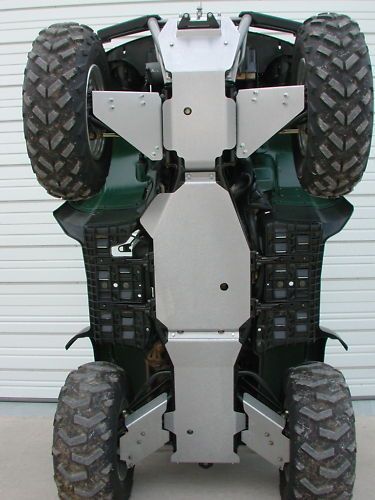 And more about headlights. They shine well, as long as they are clean, of course, and they are also quite well protected from moisture and it is not easy to get water in them, unlike most classmates.
And more about headlights. They shine well, as long as they are clean, of course, and they are also quite well protected from moisture and it is not easy to get water in them, unlike most classmates.
The front and rear luggage racks can hold more than 100 kg of cargo in total. On the right in the wing there is a sealed compartment for a couple of liters, but under the saddle there is a niche for tools.
The Yamaha Grizzly 700 is one of the most popular ATVs for those who like to go further. Reliable, lightweight, maintainable, and off-road properties are on top. And it would be a hit of all times and peoples, if not for one thing ... Due to complex considerations of potential safety, gentlemen, the Japanese do not make long-wheelbase double models at all. But the long base is not only the ability to carry a passenger. This is also stability, especially when driving in the mountains, where without steep ascents and descents there is simply nowhere. It has been verified by numerous trips and expeditions that where long quads drive without problems, a short “grizlik” is on the verge of leaving “in flight”. True, bending the frame is not easy in this case either, but what is a frame compared to the probability of being crushed by three hundred kilos?
It has been verified by numerous trips and expeditions that where long quads drive without problems, a short “grizlik” is on the verge of leaving “in flight”. True, bending the frame is not easy in this case either, but what is a frame compared to the probability of being crushed by three hundred kilos?
And more from experience. Among the stolen ATVs, the Grizzly 700 is among the leaders. After all, they work mainly in various rental offices, where they are well aware of their unpretentiousness and reliability. Well, in the secondary market it comes to ridiculous - the price of a used copy is almost the same as a new one.
Text by Evgenia Lyubimova
Photo by the Author
| Engine | |
| Engine type | Single cylinder, Liquid-cooled, 4-stroke, SOHC, 4-valve |
| Displacement | 686 cc cm |
| Bore x Stroke | 102. |
| Compression ratio | |
| Lubrication system | Wet sump |
| Fuel system | Fuel injection |
| Ignition system | Transistor ignition system TCI, ECU (electronic controller) |
| Starting system | Electric |
| Transmission | Ultramatic® Automatic V-Belt Drive with All-Wheel Engine Braking, High/Low/Neutral/Reverse/Park |
| Drive system | On-Command® - 2WD/4WD/Differential Lock |
| Final drive | |
| Chassis | |
| Front suspension system | Independent double wishbone, 5-position spring preload adjustment, 180mm travel, 250mm travel |
| Rear suspension system | Independent double wishbone, 5-position spring preload adjustment, 230mm travel, 280mm travel |
| Front brake | |
| Rear brake | Double hydraulic disc |
| Front tires | AT25×8-12 |
| Rear tires | AT25×10-12 |
| Dimensions | |
| Overall length | 2065 mm |
| Overall width | 1 180 mm |
| Overall height | 1240 mm |
| Seat height | 9029eight |
| Wheel base | 1250 mm |
| Minimum ground clearance | 275 mm |
| Min. | |
| Fuel tank | |
| Engine oil capacity (for 4-stroke engines) / Oil tank capacity (for 2-stroke engines) | |
| Load limits | |
| Front trunk | |
| Rear trunk | |
| Control system Price | Ackermann Electric Power Steering (EPS) 503000 rub |
source mail.ru
When you want to explore new places, the Grizzly 700 EPS is your go-to companion. Big torque, easy handling and modern Yamaha technology will make your extreme adventures possible.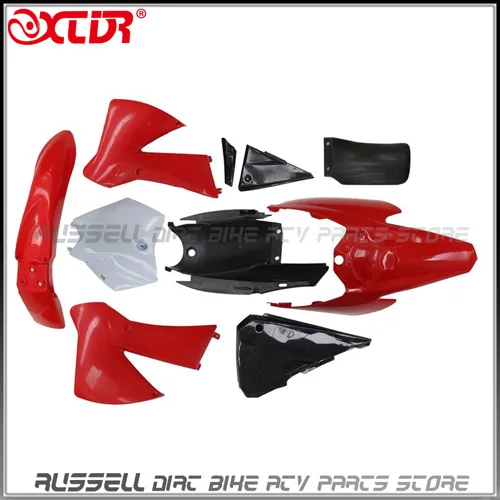
The combination of a powerful 708cc single-cylinder engine and a lightweight chassis provides the best power-to-weight ratio in the segment. The Grizzly 700 EPS is built to take you to the hardest to reach places.
Technical changes have resulted in lower fuel consumption and emissions. The upgraded EPS dual-mode electric power steering has an additional setting to improve steering smoothness in 4WD mode with differential lock. To increase stability, we installed longer A-arms, and to make the Grizzly 700 EPS even more comfortable, we retuned the long-travel suspension.
Travel, lots of fun, exciting trips with friends - all this will give you Yamaha ATVs.
The selection ranges from sport models to touring ATVs, from entry-level ATVs to models that will satisfy the most experienced ATV rider. This technique is for those who like to discover something new. Technical equipment and ergonomics allow you to break through any off-road, so you can enjoy riding in nature and do it in a relaxed and comfortable way.
Because our ATVs are low maintenance and fuel efficient, you and your companions can dive head first into the adventure and have an unforgettable experience.
You can buy Yamaha Grizzly 700 ATV from us. Albatros is the official dealer of Yamaha Motor Co in Russia. In addition to an attractive price, you will receive quality service and experience for a lifetime.
Powerful Yamaha Grizzly 700 The is, frankly, not for the faint of heart.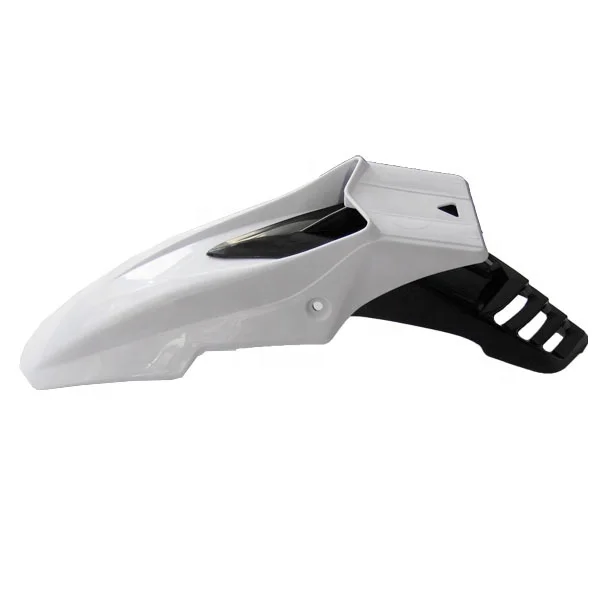 This all-terrain vehicle is designed for men with a Nordic character who does not tolerate compromises. Yamaha Grizzly 700 The is a brand new milestone in the world of Yamaha ATVs. Brand new, not borrowed from the 660 Grizzly, suspension arms, motor, frame, electric power steering that changes its characteristics depending on the speed of movement, a completely new transmission ... The list is endless. One thing is important - Yamaha Grizzly 700 The is a truly amazing ATV like no other. And if you are not used to deviating from the intended path, you are ready to climb ahead, despite all obstacles, Yamaha Grizzly 700 just for you. He, just like you, does not tolerate compromises, and is ready to go the set course in any situation.
This all-terrain vehicle is designed for men with a Nordic character who does not tolerate compromises. Yamaha Grizzly 700 The is a brand new milestone in the world of Yamaha ATVs. Brand new, not borrowed from the 660 Grizzly, suspension arms, motor, frame, electric power steering that changes its characteristics depending on the speed of movement, a completely new transmission ... The list is endless. One thing is important - Yamaha Grizzly 700 The is a truly amazing ATV like no other. And if you are not used to deviating from the intended path, you are ready to climb ahead, despite all obstacles, Yamaha Grizzly 700 just for you. He, just like you, does not tolerate compromises, and is ready to go the set course in any situation.
But from general words, let's get down to business, or rather, to describe the sensations of riding a Yamaha Grizzly 700 . During the tests, we managed to ride with all our heart: there were water barriers, and cobblestones, and fallen birch trees, and asphalt, and rolled soil, and a complete mess with a track broken by trucks. Looking ahead, let's say that on any surface Yamaha Grizzly 700 feels like in his native element. On the pavement, it pulls in no worse than a sports bike, so when driving along the highway, you should not be afraid that you will not join the stream of cars. And despite the compact dimensions, Grizzly 700 was quite confident in corners. Off-road at Yamaha Grizzly 700 didn’t have any problems either: it spun on swampy slurry no worse than on compacted soil. From time to time it became necessary to switch drive modes from 2WD to 4WD and to 4WD with a front axle lock. To be honest, there is no difference in management - the steering wheel is equally easy to spin both in rear-wheel drive and in full with locking. In other words, eat and drink. For this, one must bow low to the electric power steering, which not only stupidly removes the load from the steering wheel, but also dampens shocks.
During the tests, we managed to ride with all our heart: there were water barriers, and cobblestones, and fallen birch trees, and asphalt, and rolled soil, and a complete mess with a track broken by trucks. Looking ahead, let's say that on any surface Yamaha Grizzly 700 feels like in his native element. On the pavement, it pulls in no worse than a sports bike, so when driving along the highway, you should not be afraid that you will not join the stream of cars. And despite the compact dimensions, Grizzly 700 was quite confident in corners. Off-road at Yamaha Grizzly 700 didn’t have any problems either: it spun on swampy slurry no worse than on compacted soil. From time to time it became necessary to switch drive modes from 2WD to 4WD and to 4WD with a front axle lock. To be honest, there is no difference in management - the steering wheel is equally easy to spin both in rear-wheel drive and in full with locking. In other words, eat and drink. For this, one must bow low to the electric power steering, which not only stupidly removes the load from the steering wheel, but also dampens shocks.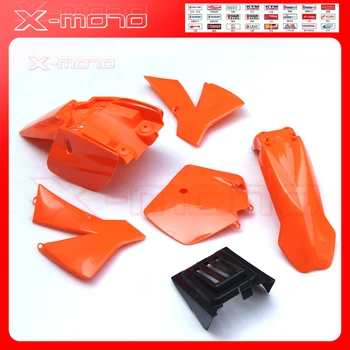 Another highlight of the electric booster is the change in performance depending on the speed, that is, the higher the speed, the tighter the steering wheel. This is really a very cool effect on safety, especially when you are driving between trees at speed. And even when you “fry” along a road cut by a rut, the “steering assistant” allows you to drive quite accurately on a given course, and, if necessary, either run into the edge of the rut, or move out into the rut.
Another highlight of the electric booster is the change in performance depending on the speed, that is, the higher the speed, the tighter the steering wheel. This is really a very cool effect on safety, especially when you are driving between trees at speed. And even when you “fry” along a road cut by a rut, the “steering assistant” allows you to drive quite accurately on a given course, and, if necessary, either run into the edge of the rut, or move out into the rut.
However, the ability of the "helmsman" plays an important role in the cross-country ability. It is important to load and unload the right side in time, or rather, the wheel. Why you need to jump on Yamaha Grizzly 700 , like a monkey on a palm tree. But it gives a guaranteed result. On the technical side, for a total mileage of almost 2000 km, no problems have been identified since the start of operation. None at all. True, for the participants in the test tests it still remains a mystery, as during the murderous operation at Yamaha Grizzly 700 even the anthers of the CV joints did not break? .. That's what "Made in Japan" means! The motor is a separate song. To start with, this is among the Yamaha ATVs is the engine with the highest power density and fantastic torque. In all modes of operation, the motor has no dips and makes the quadric drive tight from start to maximum speed. The engine is "single-barrel", injection, short-stroke with a working volume of 686 "cubes". The power gives out a little more than 46 "mares", but the whole buzz is not even so much in horses, but in torque and a really low weight of the quadric (the mass is only 274 kilos).
None at all. True, for the participants in the test tests it still remains a mystery, as during the murderous operation at Yamaha Grizzly 700 even the anthers of the CV joints did not break? .. That's what "Made in Japan" means! The motor is a separate song. To start with, this is among the Yamaha ATVs is the engine with the highest power density and fantastic torque. In all modes of operation, the motor has no dips and makes the quadric drive tight from start to maximum speed. The engine is "single-barrel", injection, short-stroke with a working volume of 686 "cubes". The power gives out a little more than 46 "mares", but the whole buzz is not even so much in horses, but in torque and a really low weight of the quadric (the mass is only 274 kilos).
Competent weight distribution, plus long-travel energy-intensive suspension allow Yamaha Grizzly 700 work wonders.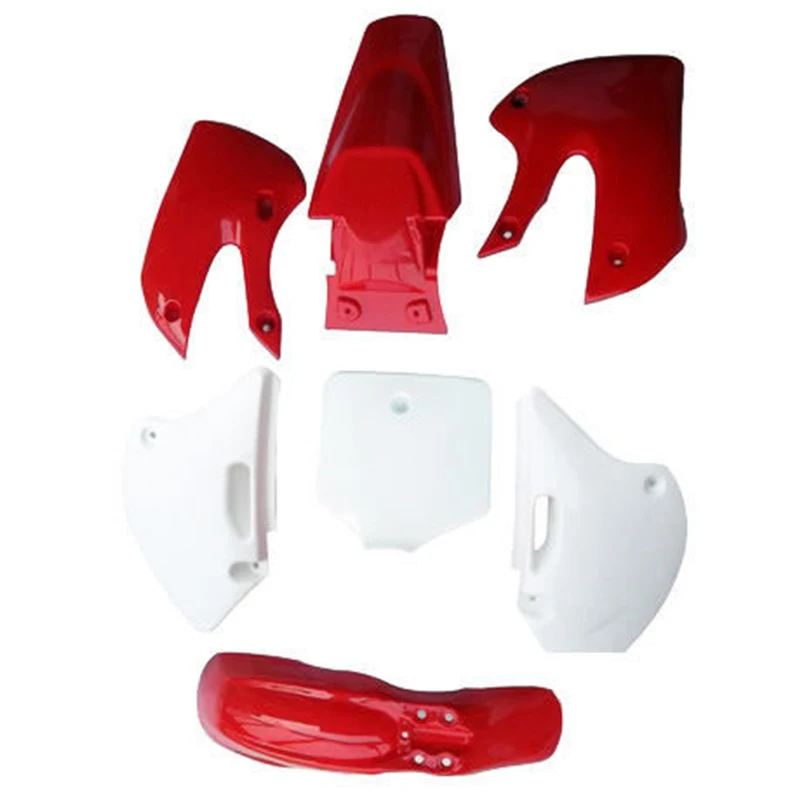 The quadric, as if on rails, goes at a speed of 90 km / h and only closer to a hundred begins to float slightly on the road - tires with powerful lugs affect. The suspension, by the way, is adjustable in stiffness (five steps of spring settings), which is especially important for riders who are used to squeezing everything they can from a quadric. After all, the cross-country ability ultimately depends on how you adjust the suspension for the weight of the rider. But if you're not that big of a fan, and you're looking for hunting, fishing, and outdoor activities rather than competition, then the softest suspension setting is just what the doctor ordered.
The quadric, as if on rails, goes at a speed of 90 km / h and only closer to a hundred begins to float slightly on the road - tires with powerful lugs affect. The suspension, by the way, is adjustable in stiffness (five steps of spring settings), which is especially important for riders who are used to squeezing everything they can from a quadric. After all, the cross-country ability ultimately depends on how you adjust the suspension for the weight of the rider. But if you're not that big of a fan, and you're looking for hunting, fishing, and outdoor activities rather than competition, then the softest suspension setting is just what the doctor ordered.
But in addition to a powerful motor for a quad bike, an important indicator of the brake. For Yamaha Grizzly 700 is equipped with efficient hydraulically actuated disc brakes. Our hero has four brake discs: two on the front wheels, two on the rear.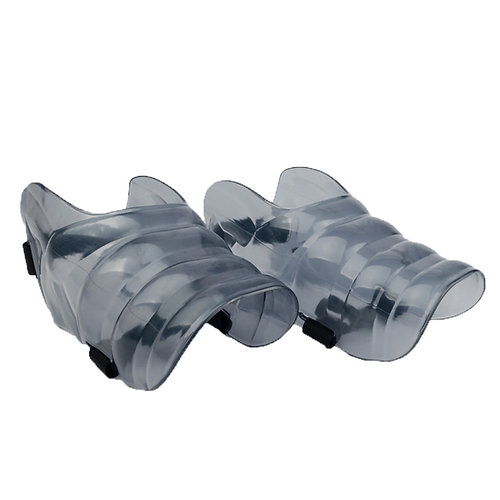 The engine braking system is also available and works properly. On long descents, it is convenient to use it in conjunction with the rear brakes. Yamaha Grizzly 700 is a dream ATV: powerful, fast, stable, with good cross-country ability and excellent handling. Yamaha Grizzly 700 has everything you need for versatile operation. It is perfect for both quiet and contemplative travel, and for serious off-road outings.
The engine braking system is also available and works properly. On long descents, it is convenient to use it in conjunction with the rear brakes. Yamaha Grizzly 700 is a dream ATV: powerful, fast, stable, with good cross-country ability and excellent handling. Yamaha Grizzly 700 has everything you need for versatile operation. It is perfect for both quiet and contemplative travel, and for serious off-road outings.
Regardless of the type of transmission and engine power, all ATVs are divided into two main varieties.
It is important for buyers to understand the difference between these categories in order not to subsequently criticize the purchased equipment in vain.
The Japanese company Yamaha Motor Company, once part of the large multinational concern Yamaha, has come a long way before becoming one of the market leaders in the production of motorcycles. But today there are few who want to question the authority of the manufacturer, famous for the quality and reliability of its products. And although all modern models are produced using advanced technologies and technical solutions, the company approaches their improvement carefully, not seeking to abandon well-proven design elements in favor of newer ones, but not fully proven ones.
A clear illustration of this approach is the utilitarian Yamaha Grizzly 700 ATV, the technical characteristics of which, if not the standard in its class, then one of the most impressive. This machine has been produced for quite a long time, and all the changes made to the design went to the machine exclusively for the benefit, without changing its basic qualities for the worse.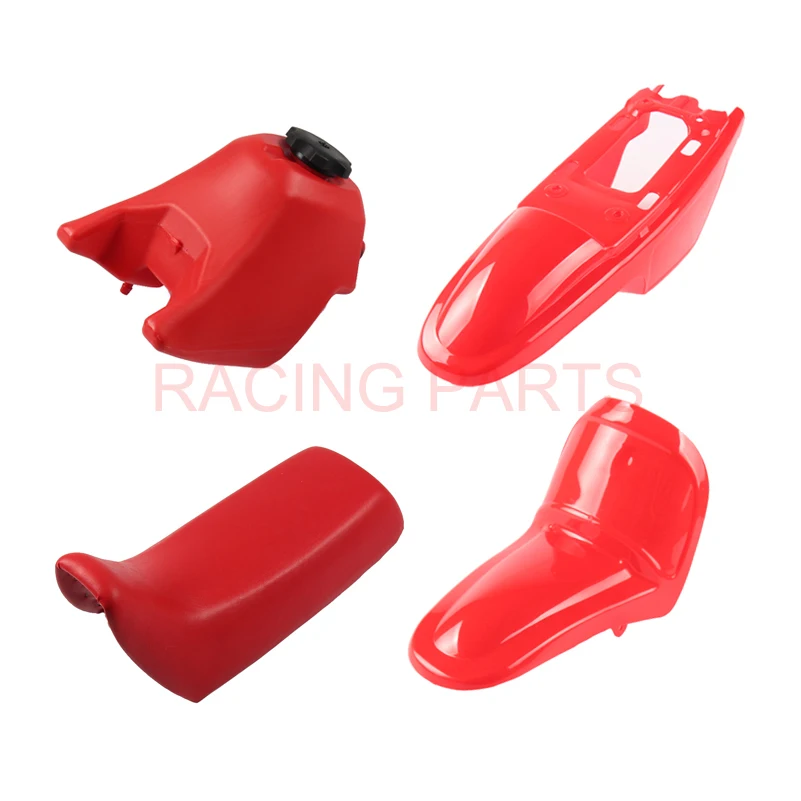 Like any vehicle, the Grizzly 700 has its pros and cons, but for many off-road enthusiasts, it still remains desirable. And although from time to time there are people who want to criticize the Yamaha ATV, the reviews of most owners speak of the high quality of the popular model.
Like any vehicle, the Grizzly 700 has its pros and cons, but for many off-road enthusiasts, it still remains desirable. And although from time to time there are people who want to criticize the Yamaha ATV, the reviews of most owners speak of the high quality of the popular model.
Evaluating the Yamaha ATV, the technical characteristics of which, even at first glance, look impressive, you should pay special attention to its important advantages.
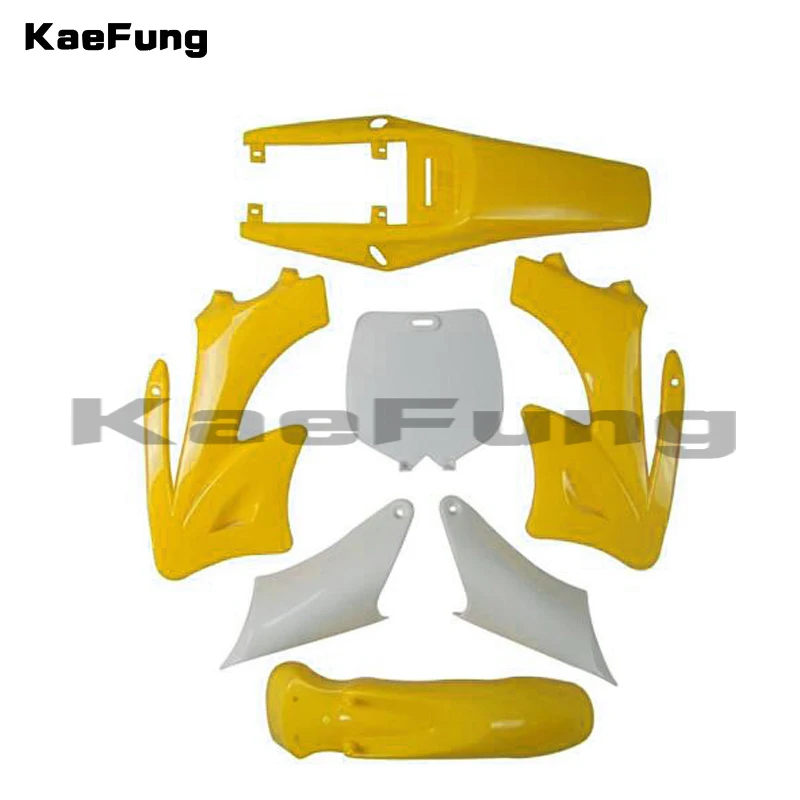
Shortcomings prevent becoming a perfect car, for some potential customers they turn out to be really important.
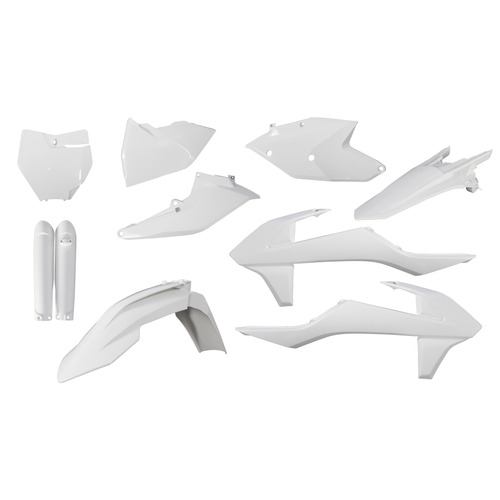 It is really high and the new device is far from affordable for everyone. What to do, you have to pay for quality and brand.
It is really high and the new device is far from affordable for everyone. What to do, you have to pay for quality and brand. If we evaluate the Yamaha Grizzly 700 ATV from a purely technical point of view, its characteristics are as follows:
Single-cylinder, four-stroke engine has a displacement of 708 cc. see and at 7500 rpm. its maximum power reaches 46 hp. With. The main quality of this power unit is high traction on the bottoms, which became possible thanks to the features of the exhaust system and the Mikuni 44 mm carburetor. Unlike cars, where injection has taken a leading position, when used on motorcycles, its advantages are not so obvious. Engine cooling is liquid, and the lubrication system is separate.
Unlike cars, where injection has taken a leading position, when used on motorcycles, its advantages are not so obvious. Engine cooling is liquid, and the lubrication system is separate.
4WD automatic transmission using Yamaha's proprietary Ultramatic CVT. It works in 2WD/4WD/4WD modes + differential lock. Fans of overcoming road difficulties, no doubt, will appreciate its convenience and efficiency.
The suspension design uses double wishbones. The front axle travel is 193 mm, and the rear axle travel is 232 mm. This reserve is enough to cope even with serious obstacles.
The safety philosophy promoted by the company is fully consistent with the braking system. Efficient hydraulic disc mechanisms are able to quickly stop even a fully loaded machine.
What can I say, the model is really worthy of attention. But if by typing the search query “Yamaha Grizzly 700 ATV price new”, someone comes to the conclusion that there is not enough money to buy, you should pay attention to the used equipment market.